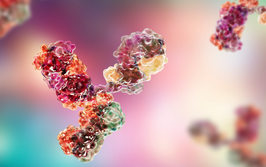Weathering the Storm: Cell and Gene’s Economic Downturn
An early wave of investor enthusiasm followed by an economic crisis has landed our field in a sea of trouble – so how can we swim to shore?
James Wilson, Anshul Mangal | | 5 min read | Review

The biotech industry enjoyed years of prosperity in which capital was easily accessible and saw record-setting investments, most notably from 2020 through 2021. During that time, technology, research, and drug development – specifically for cell and gene therapies – flourished to reach incredible heights, offering new hope to patients suffering from rare diseases. Substantial investments in programs led to first-of-their-kind product approvals for regenerative medicines and enabled researchers to dramatically advance therapies for small patient populations living with unmet medical needs.
Following record-setting milestones in fundraising over the past two years, the advanced therapy investment landscape is experiencing a natural correction and has returned to pre-pandemic numbers (2018 and 2019. In the face of a market downturn, company leaders must save capital and make difficult decisions and consider mitigating measures, such as forced layoffs and the pausing of critical product programs, which ultimately put industry progress at risk. Divesting from bad assets, such as unnecessary manufacturing facilities, can also help stretch capital.
When it is difficult to raise capital, more financially rewarding programs are prioritized. Programs serving smaller patient populations are often viewed as less attractive from a commercial standpoint and may be sidelined, regardless of their likelihood of success. However, this does not mean the end for these programs. The leaders of the advanced medicines industry and champions of patients with rare diseases are dedicated to ensuring these programs weather the storm and ultimately succeed.
The state of the landscape
When discussing the current financial landscape, it is crucial to consider what is happening within the industry and the larger macroeconomic environment. As the economic downturn looms, we are seeing a delay in public offerings, layoffs, and lowered valuations as companies attempt to stretch their dollars. With the rising prices of capital, materials, and extended supply chain timelines driving costs up further, many critical programs are now at risk.
Though it is certainly more difficult to raise money today than in the past two years, there are still exciting developments in the cell and gene therapy industry. According to the Alliance for Regenerative Medicine (ARM) Report in 2023 (1), 2,220 trials are ongoing worldwide as we enter 2023 – 254 of those currently active were initiated in 2022. With 202 of these trials reportedly in phase 3, there are still an impressive number of therapies in the approval pipeline. Despite the decline in investment dollars and clinical trial numbers, there are 18 therapy approvals slated for this year, with 14 of them expected in the US.
The advanced therapy industry continues to see success, but there is no denying that the market has contracted. Both companies and investors will be forced to act with purpose moving forward, employing strategies that make existing capital work harder and more efficiently.
The current environment in advanced therapies was brought about by a combination of industry-specific factors, such as investments from inexperienced players and talent gaps, as well as macroeconomic factors, such as the public market and supply chain issues resulting from the pandemic.
Following a seemingly endless flow of capital into advanced therapy and a series of product successes in 2020 and 2021, an irrational exuberance gripped investors. New players flooded the field, and companies were quickly spun out and scaled prematurely. During this boom it became extremely easy to make decisions that should have taken more time and consideration, and that allowed for rapid and unchecked progress for countless programs across the industry. Thanks to a plethora of emerging technologies and large infusions of capital from investors new to the industry, it became difficult to identify the “best-in-class” products. Now we are seeing a major wave of redundancies, and the industry will continue to suffer without solutions.
Focusing on patients
In fact, recent news has shown that as more clinical data is published and mergers and acquisitions are occurring, we are now seeing who is emerging victorious in this sector. In this case, consolidation is not a negative thing – it’s an essential process that funnels and allocates investments that enable the advance of the best possible treatments towards patients.
Constructing a strong portfolio means thoughtfully defining and differentiating products and considering how new products could make a meaningful impact. In this process, we need to ask ourselves, “What is the actual innovation?” Being clear on this issue helps developers focus on their main mission and prioritize the best products in their portfolio. This may lead companies to modify their organizational structures by deciding what aspects to keep in house, while moving to outsource everything else. Leveraging other industry experts whenever possible may also protect companies’ resources from being allocated to ventures that do not move the needle; for example, patient advocacy groups are a hugely underutilized resource for drug developers and investors. These groups are dedicated to advancing treatments for patient populations and are host to untapped knowledge that can provide solutions to problems that may lead to failure. Leveraging their expertise, resources, and data to drive decision making helps bridge a wide gap in the drug development process and can only increase chances of success. Moving forward, the industry must foster a collaborative ecosystem by engaging developers, patient advocates, regulatory bodies, and investors to tackle problems and move the industry forward.
A clear path
Programs appearing across different companies without a clear path for product development ultimately lead to inefficient use of capital. Rare diseases are a strong investment, but without a direct route to develop and deliver products, the mission’s overall chance of success is low. Rethinking commercialization to use platform models and pool assets will allow for diversification, decreased risk, and access to a broader range of patients.
The likelihood of product success increases when goals are defined on patients’ terms, rather than on public offerings and short-term paper value. Cell and gene’s road to economic recovery will not be straightforward – setbacks will inevitably occur – but, if the industry centers all goals around delivering life-saving therapies to the patients who need them, there is good reason to remain optimistic.
- Alliance for Regenerative Medicine, “Cell & Gene State of the Industry Briefing,” (2023). Available at https://alliancerm.org/arm-event/sotibriefing/
Professor of Medicine and Pediatrics, Perelman School of Medicine, University of Pennsylvania
President, Project Farma



















